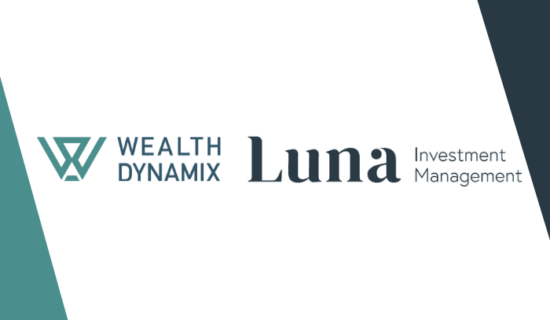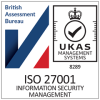Back in 2020, a group of leading wealth managers met to discuss the state of the industry. The discussions, which were held in March, September and November, meant these meetings captured the ongoing responses to the pandemic. This article below on the changing perspectives of advisors is an extract from the whitepaper which followed these discussions.
When asked to name the greatest challenge they’ve faced while remote working, executives were clear: time. In an industry that’s long struggled with squeezed margins and high client ratios, this is not a new issue, but there’s been a clear shift in the drivers behind advisor demand, many of which have been prompted by the pandemic itself.
“Remote working has made clients much more efficient with their time,” one wealth management executive told us. “They’ve found themselves with more time than ever, so dealing with their personal affairs has move promptly up the priority list – and that has impacted our workloads significantly.”
A lack of commuting and travelling to meetings left many advisors with time in the bank, which has been reinvested to provide valued reassurance amid continually challenging markets. As we emerged from the initial lockdown period, advisors reported a renewed expectation amongst some clients to meet face-to-face, with one taking to the golf course to satiate client demand for in-person discussions.
But while some clients may be vying for the personal touch, corporate Britain is not so keen: 74% of UK businesses said at the start of lockdown that they planned to keep a portion of online workers to permanently remote positions in the future. With many firms latterly closing their offices for the foreseeable future, ‘face time’ is clearly a thing of the past – and businesses must do all they can to enable efficiencies and buoy employees who are missing human interaction.
Screen time
2020 saw the industry make strides, digitising more in a matter of months than over the last few years. As wealth managers sit back and take stock of these sizable advancements, however, they cannot afford to rest on their laurels: rather, they need to work out how to harness this change and keep pace with client expectations and the technology that will enable these.
“Remote working has made clients much more efficient with their time. They’ve found themselves with more time than ever, so dealing with their personal affairs has move promptly up the priority list – and that has impacted our workloads significantly.”
Segmentation as we know it may be waning: after all, just 17% of wealth managers expect traditional approaches to segmentation will still be in effect within the next five years; but it has never been quite as important to understand the clients on your books.
Effective lifecycle management capabilities are critical to driving insight from the earliest opportunity, and this should be translated into actionable insights that drive efficiencies across the breadth of your business. Our discussions pointed to a “clever use of digitisation” playing out in the future, as firms optimised the channel mix according to different wealth bands.
Look at your client base and consider the client experience and the commercial implications of mobile versus face-to-face delivery of service. Making sure you’ve got the infrastructure in place to optimise these with scalable services and solutions could well give your firm the competitive edge you need in the future.
Mixed bag
Although we entered the prospect of UK lockdown with some trepidation, client and advisor engagement continued at a relatively seamless pace. But while jittery markets and a sharpened client focus had spurred a quick adoption of online channels, we await to see how this will impact the bottom line of an industry in which delivery is an inherent issue and cost-income ratios are high.
One executive anticipated clear consolidation as he recounted clients flocking from advisory to the relative safety of discretionary fund management. And while several firms reported surprising success once they’ve bedded into their new way of working, many feel under pressure to sustain business development levels throughout 2021 – which is no mean feat in a virtual world when you can’t “see the whites of prospective clients’ eyes”. As one executive said, “You can develop a lot more EQ around a meeting in a physical setting as a business development process. I think advisors have found the lack of this a challenge.” But referrals remain strong, with many wealth managers reporting uninterrupted dialogue with their intermediary networks.
Channel of choice
Clients may have been spurred to go digital through lockdown but the wealth managers we spoke to had seen a renewed preference for human interaction – whether by phone, video or face-to-face. With private client behaviour fast evolving and more than 80% of family businesses set to change hands over the coming decade, it’s vital to stay close to the clients within your reach. Ensure your business has the workflows in place to enable a full understanding of client needs and dynamics across sales, prospecting, onboarding and service management spanning every channel of operation.
“Advisors are faced with a raft of challenges at the moment. They’re dealing with the complexity of the processes involved in servicing existing clients and also onboarding new clients. Add to that complex data and people dynamics and firms have a lot to manage indeed.”
Analyse client sentiment and make timely and targeted recommendations that mitigate any issues at the outset.
And think laterally as your select the processes and platforms that should carry your firm into the future. Remember that one size never fits all: we could well see more personalisation at the client interface, while digital powers a leaner, more efficient middle and back office.
Optimising efficiencies
So, wealth managers may have mastered communicating through clients’ preferred channels of choice, but are they really squeezing all they can from the working day? Admin remains a clear drain on advisor efficiency, while others reported getting bogged down in data, whether in trying to source insights or crunch the numbers at their disposal. “Advisors are faced with a raft of challenges at the moment,” says Ian Woodhouse. “They’re dealing with the complexity of the processes involved in servicing existing clients and also onboarding new clients. Add to that complex data and people dynamics and firms have a lot to manage indeed.” Regulation was regarded by some executives as a “blocker”, particularly as their advisors adapt to working away from the office hub.
“Some see the regulatory side as a bit of an overhead, and it’s been harder to embed this culturally while we’ve been working remotely.” And while the pandemic has expedited a widespread adoption of digital signatures and AML, some quarters have been more reticent that others to embrace change – which could be to their detriment in the long term. One firm told us they would start directing business to more advanced partners in favour of slow digital adopters.
Best foot forward
It’s important that the industry maintains momentum on its digital journey as we head into 2021.
The regulator pledged in its Business Plan to “take stock” of its own pandemic-enforced measures, so we can only expect firms’ individual actions to face similar scrutiny as clients self-serve or are advised at arm’s length. Work smartly now to avoid remediation in the future, assessing your systems and processes as well as the balance between human and automated monitoring and engagement.
Don’t accept inconsistencies in digital adoption: work with like-minded firms to lobby industry partners and intermediaries to pick up pace so your efforts aren’t impeded.
And make the most of this window of opportunity to expand your third-party network, utilising technology to broaden and deepen connections with lawyers, trustees and accountants.
This is an extract from the whitepaper titled Wealth Management Technology Beyond 2020. Download the whitepaper now to understand how 2020 reshaped the wealth management industry and the key learnings firms can take moving forward.





